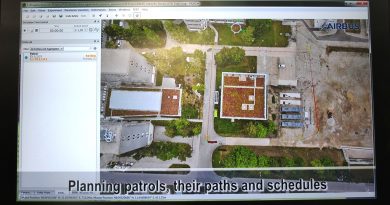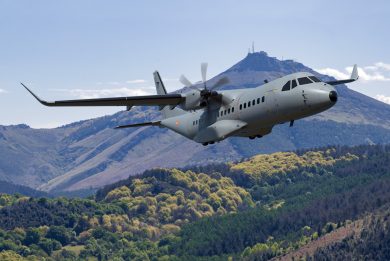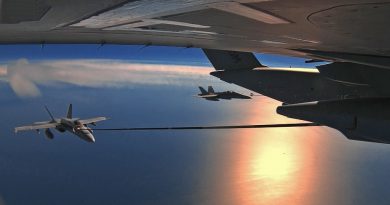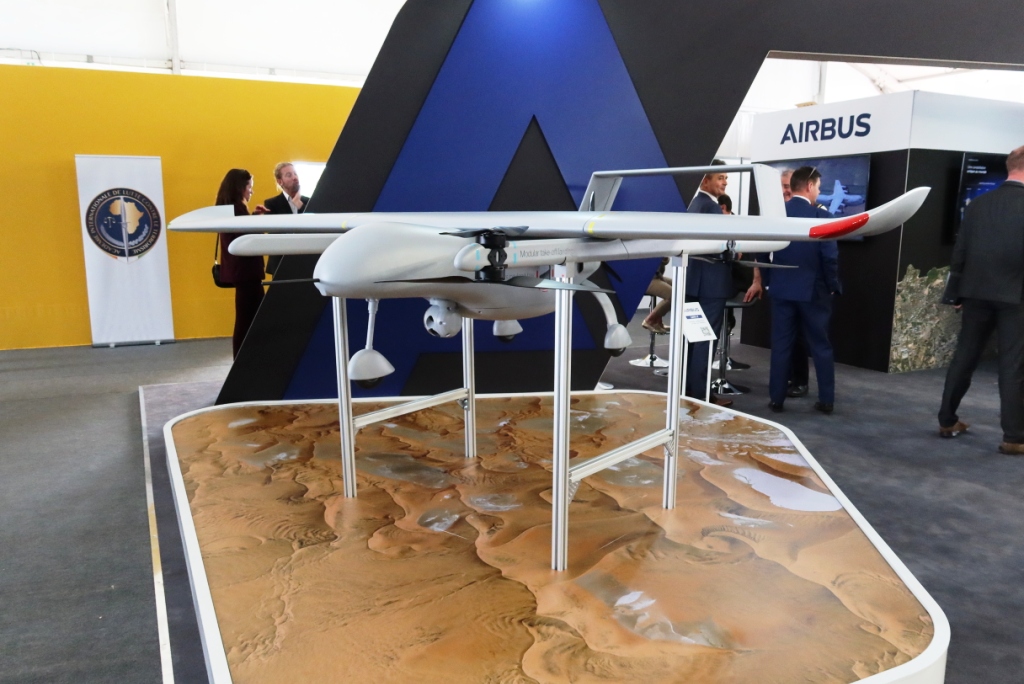
SOFINS 2023 – Airbus CAPA-X tactical UAS: flexibility first
Tactical UAV systems can be used for many types of mission, as well as deployed in different situations. Developing a system capable to answer as many requirements as possible thanks to its flexibility is what led Survey Copter designers to conceive the CAPA-X.
An Airbus subsidiary since 2011, Survey Copter has considerable experience in the development of such UAS, and at SOFINS 2023 it unveiled its new T-UAS, the CAPA-X, fully developed on company funds, which has shown quite a peculiar aspect once the veil was lifted.
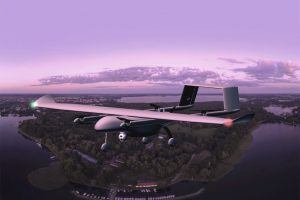
Overall, its architecture is quite conventional, high wing with winglets, central fuselage with the engine at the rear driving a three-blade propeller, fixed tricycle landing gear, two booms fitted to the wings carrying the rear empennages and stabiliser. What was striking was the asymmetry of the airframe, with the left wing shorter than the right one, and two twin rotors assembly fixed to the left boom. Not a design mistake, just a show of modularity!
The CAPA-X will obviously never fly in that configuration, the aim of the layout adopted on the mock-up on exhibition, which was a 1:1 scale model, being to show the system modularity.
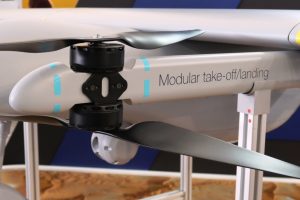
Depending on the mission and the operational scenario the T-UAS under development by Survey Copter can be prepared in different configurations. One choice is to adopt short or long wings; the shorter option has a 3.6 meters wingspan, and is suited for example for higher speed missions where manoeuvrability is an issue, a higher wing-load ensuring better performances. If endurance is the key factor, the longer wings increase the span to around 4.5 meters, improving aerodynamic performances. On the other hand, beside the typical take-off and landing capacity on a runway, should the operational area lack the suitable surface the CAPA-X can become a VTOL airframe. The standard rear assembly is replaced by a different one which is longer, booms protruding ahead of the wings, carrying four electrically powered twin rotor systems fitted to the booms ahead and behind the wing. The booms contain Lithium-Ion batteries that ensure sufficient energy for a limited number of take-off and landing manoeuvres. The VTOL capacity ensures a reduced footprint, while the availability of a multi-role multi-mission T-UAS also reduces the logistic footprint.
Dimensions requirements and missions of the CAPA-X
Changing the wings or the rear assembly is a simple and quick operation, this allowing to rapidly reconfigure the CAPA-X between two missions. Dimensions were derived from the requirements considered in the concept phase, the aim being to have a T-UAS capable to carry at least 10 kg of multiple payload, for 10 hours at 100 km range. A brochure distributed at SOFINS calls for a ceiling of 3,000 meters and a maximum speed of 150 km/h (81 knots), maximum take-off mass being 75 kg. Survey Copter is of course using some building blocks already developed by the company, such as the weControl autopilot and the ground control station.
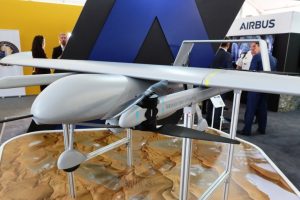
Behind the front landing gear we find the optronic gimbal, fully gyro stabilised, produced in-house, followed by a payload bay where different types of loads can be integrated, the aim of the company being to fly the system with two or three different payloads at the same time.
As previously said, minimum payload is over 10 kg, but this is in the worst case scenario, when the CAPA-X is fitted with short wings and the VTOL kit. Getting rid of the extra-weight of the VTOL rear assembly, longer and with rotors and batteries, and installing longer wings, the payload figure should be more than double.
Many of the details provided above might become not true once the development work will be fully completed. The company is for example still selecting the engine, which ight bring also to a new propeller. According to Christophe Canguilhem, Survey Copter Managing Director, the CAPA-X should fly by year end.
Back to our SOFINS 2023 full editorial coverage menu.
Graphics courtesy Airbus, photos by P. Valpolini

